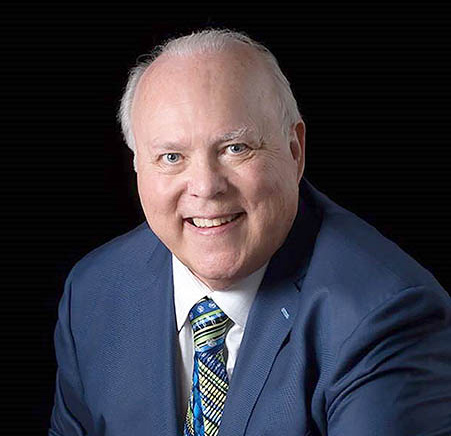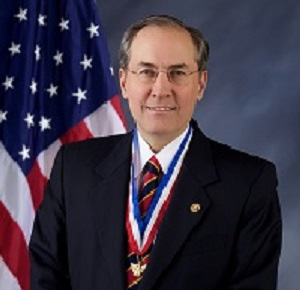View Articles By Category
- All
- Aquatics
- Awards
- Camping
- Conservation & Environment
- COPE/Climbing
- Fishing
- NCAP
- Outdoor Ethics/Leave No Trace
- Properties
- Shooting Sports
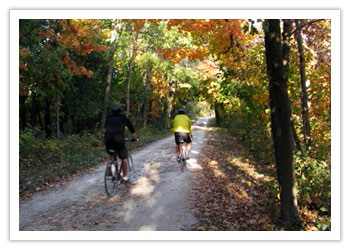
Awards
The Boy Scouts of America (BSA) maintains a register of approved National Historic Trails. You can find the listing on “The Adventure Plan” (tap.scouting.org). There are several hundred trails across the country. The area and terrain covered by many trail routes hosts an authentic and historic significance and/or a wilderness beauty that adds to the education of BSA members. These trails also provide the opportunity for physical fitness and outdoor living.
Two such trails recently added are sponsored by the Three Fires Council of St. Charles IL. They are:
The Illinois Fox River Trail and Illinois Prairie Path Trail.
These two trails are laid in the same tracts as interurban rail systems. The history of interurban service in this country is a fascinating area of the railroad industry often forgotten since many were shut down between the 1920s and the 1940s. These systems were designed for passenger commuting before many people had automobiles and connected certain cities. Their sole purpose was passenger use and had direct service to and from limited destinations.
The rails to trails system in northeastern Illinois was first proposed in the United States during the 1960s. Converted railways have been added to this system for over forty years and have become a part of a national biking and hiking trail system.
By accessing a trail, one can learn the history and importance of these railway systems from previous decades. It will show how conversion and development to a historic trail benefits the communities they pass through today and how the trail system’s future use can lead to better health and experiences for those that enjoy them.
The Fox River Trail spans 44.6 miles and was built on stretches of three former railroad beds. Today, it hosts a multitude of different flora and fauna. Starting at the southern terminus, this rail-trail originates in the charming village of Oswego, 50 miles west of Chicago. The trail begins at the face of the Fox River and has playgrounds, picnic areas, and benches, as well as a restroom and drinking fountain.
The Illinois Prairie Path was one of the nation’s first rail-trail conversions. It consists of five connected trail segments with three main branches. The 58-mile trail follows a very historical rail path. Beginning in 1902, the electric railroad provided passenger service from the western suburbs to downtown Chicago. The Illinois Prairie Path’s 16-mile Main Branch is the most urban of its corridors, which follows city streets with extra wide bicycle-friendly sidewalks. Just when you think you have left the remoteness of the trail; the Lincoln Marsh Natural Area affords a bucolic diversion. With multiple overlooks and interpretive signs, the marsh provides the perfect finishing touch.
Units are highly encouraged to participate in the opportunities that the National Historic Trails program provides. Visit the website for a complete listing of trails, you may be surprised by trails near you!
NCAP
In 2013, the Boy Scouts of America implemented the National Camp Accreditation Program (NCAP) which was established to help councils elevate camps to new levels of excellence in delivering Scouting’s promise to youth. At this time, Councils became engaged in rigorous reviews of their camps and properties, challenged to have continuous improvement plans, while also reviewing their programs to eliminate any substandard practices.
The Outdoor Programs & Properties Team sat down with Carl Nicolaysen, the National NCAP Chair to talk about NCAP and what it is all about as we reflect on nine years of NCAP!
Outdoor Programs & Properties: What is the main purpose of the National Camp Accreditation Program?
Carl: To help councils elevate camps to new levels of excellence in delivering Scouting’s promise to youth. This is done through promoting top quality programs, health, safety, and the well-being of every camper, leaders, visitors, and staff.
Outdoor Programs & Properties: What do you mean by your comment “delivering Scouting’s promise to youth?
Carl: Every time a youth is recruited to join Scouting, we promise that they will have the best outdoor experience available – NCAP was designed to help councils to meet the promises that were made. The BSA is known as experts in camping and NCAP helps councils meet the minimum requirements, or standards, to deliver the level of Scouting that the youth, and their parents want them to have.
Outdoor Programs & Properties: Each and every council seems to have a lot of different types of camps, how do they know what standards they must follow?
Carl: There are a set of standards that the different classifications of camps must attain, and it also is determined what programs they are offering. These standards are reviewed each year by subject matter experts to make certain that they are still relevant, and they are helping to guide the councils to success. We continually take a look at these classifications, and they have changed quite a bit over the last nine years.
Outdoor Programs & Properties: So, all a council must do it follow the standards?
Carl: Not quite. The standards are set up to follow the three parts of NCAP – The Authorization, the Assessment, and the Accreditation. Councils apply to be authorized to operate the different camping properties and programs that they operate. Part of this process is designed to make certain that the council not only operates a safe and quality program, but they do it in a quality facility while being financially sound. When the council operates one of the properties or one of the camps, they are assessed to make certain that they follow the specific standards that they must operate under. Once this is done and it is found that they are meeting all the required standards, the council’s program is accredited through the BSA’s National Camp Accreditation Program.
All of this is described in the standards.
Outdoor Programs & Properties: This sounds like a huge undertaking – who coordinates all of this?
Carl: The BSA is blessed to have a phenomenal group of volunteers and staff that cover the various aspects of NCAP. The National NCAP Committee oversees the whole process, but there are teams developed for each part.
Authorizations – A team of volunteers work with councils to complete the authorization process. The councils’ complete various documents to help them review their program and to how it effects their council.
The Standards and Governance team leads the review every year of the standards with the subject matter experts in each of the areas and recommends changes needed to the committee. They also handle any waiver, variance, or equivalency determination request that are requested.
The Assessment team is the largest team because they must assess every long-term camp that is operated by the councils. Approximately 2,000 volunteers get training and then visit one or more long-term camp to determine if all the required standards are being met, and that there is a quality program being offered. Councils also self-assess day camps and short-term camps.
Outdoor Programs & Properties: Thanks Carl, we look forward to talking with your team over the next few issues to learn more about what exactly they do.
Carl: We are glad to answer any question to help everyone understand the importance of this program and how we can help council. Continuing to improve the NCAP process and the support/tools it provides local councils is a constant goal for our committee. NCAP is the strongest when it is a collaboration between all of us.

Camping
Introducing Cub Scouts and their parents to the thrill of day and overnight camps requires a thoughtful marketing strategy that combines the best practices from the Boy Scouts of America and successful initiatives from local BSA councils. Leveraging social media, website improvements, and print media can create a dynamic and impactful campaign that resonates with families seeking enriching experiences for their young Scouts.
Social Media Engagement:
Harnessing the influence of social media platforms is a cornerstone of modern marketing. Successful local BSA Councils often excel in creating engaging content for Facebook, Instagram, and Twitter. For instance, sharing real-time updates during camp sessions, posting testimonials from enthusiastic Cub Scouts, and hosting live Q&A sessions with camp organizers can generate excitement. Be sure to incorporate visually appealing graphics and use targeted advertising to reach specific age groups and interests within the Cub Scout community. How you promote day camp will look different than marketing an overnight camp.
Website Improvements:
Your website is the entry point to converting interest to a registered camper. Local BSA councils who have the best success have websites with easy navigation, vibrant visuals, and detailed information on activities. The Greater New York Councils BSA, for instance, provides a comprehensive online platform featuring camp highlights, safety measures, and a parent resource section. You could even consider incorporating a blog or news section for regular updates, and ensure the website is optimized for mobile devices for convenient access. Likely the majority of individuals who use your camp website(s) are doing so from their mobile device.
Print Media Campaigns:
Print media remains a helpful tool for reaching parents and Cub Scouts with camping information. Local BSA councils, such as the Greater St. Louis Area Council, effectively utilize newsletters and newspapers to share success stories and camp highlights. Brochures and flyers distributed in schools and community centers serve as tangible reminders. Don’t forget to align with BSA guidelines for design and content. You could also consider collaborating with local businesses to sponsor and distribute promotional materials. This collaboration can help take financial pressure of your camp budgets.
Testimonials and Success Stories:
One of the most persuasive marketing tools is the authentic voice of satisfied parents and Cub Scouts. Think of how you decide to buy a product. You likely read reviews from others. Consider the use of testimonials in various marketing materials. The Northern Star Scouting Council in Minnesota, for instance, features video testimonials on their website, showcasing the impact of camp experiences. Encourage parents and Cub Scouts to share their stories through written testimonials, photos, and videos to build trust and credibility.
Highlight Educational and Developmental Benefits:
Share the outcomes of camp! Camp delivers the educational and developmental benefits of Scouting programs. Each of us should work to effectively incorporate these messages into camp marketing. The Michigan Crossroads Council, for instance, highlights skill-building activities, leadership development, and character-building experiences in their camp promotions. Align the camp’s offerings with the BSA’s educational goals and values, emphasizing the holistic development of young Scouts. Parents have many choices of where to send their kids to camps of all types. This focus on why Cub Scout day or overnight camp is so important can resonate with a parent who is looking for a camping program that helps build resilience and skills in their child.
In conclusion, marketing day and overnight camps to Cub Scouts and their parents requires a comprehensive strategy that blends social media engagement, website improvements, and print media campaigns. By leveraging successful examples from local BSA councils and adhering to BSA guidelines, camp leadership can craft a compelling marketing plan that showcases the transformative and adventure-filled experiences awaiting Cub Scouts in the world of Cub Scout camp.

Properties
If your camp location experiences heavy snowfalls during the winter months, your roofs may be at risk of collapsing. It’s not just the amount of snow, but also the snow’s water content that contributes to the overall weight. One inch of water weighs 5.2 pounds per square foot, and snow can have different distributions of water content. A particularly wet snowfall can pose a greater danger for your roof, and rain falling on the snow can triple its weight.
The following tips from Church Mutual can help you prevent roof collapse from snow:
- Regularly inspect your roofs for damage. Well-maintained roofs are less susceptible to snow collapse. Perform an annual inspection on every roof at your camp — or hire a contractor to do so. Remember to follow all safety regulations.
- Watch for warning signs that may indicate structural weakness in your roofs. Warning signs to keep an eye out for include:
-
- Doors or windows that are difficult to open.
- Cracking, popping or groaning sounds.
- Bent or deformed metal roof supports or beams.
- Walls that have cracks or are bending outward.
- Roofline or decking that is sagging or wavy.
- Determine the maximum safe snow depth for each roof. This should be based on each roof’s load capacity as determined by an engineer during the planning and construction process. If you don’t know the load capacity of your camp’s roofs, consider enlisting the services of an engineer to provide you with this crucial information. It’s also important to know the type and amount of snow your camp location typically receives.
- When snow accumulates at your camp location, keep an eye on your roofs. Many camps do not maintain full-time staff on-site during the off-season. If that’s the case for you, be sure to implement a process for monitoring snow depth on your roofs throughout the winter. Watch for snow in roof valleys — low areas of the roof that may end up bearing a larger load of snow than other areas. Check the downwind side of pitched roofs, and if there are dormers or other structures on your roof, watch for accumulation of snow along the sides.
- Remove snow from your roofs before it reaches 50% of the safe snow depth. You can do this by using a roof rake. If this cannot be completed from the ground, consider securing the services of a qualified, licensed contractor, given the risk involved and the potential for damage to the roofs.
- When removing snow from your roofs, do so uniformly, in layers. This will prevent unbalanced loads, which could cause a collapse. Again, consider using a qualified licensed contractor to help you remove snow from your roofs.

Camping
Question: How cold is too cold for Cub Scout camping?
Answer: There is no national policy for Cub Scout winter camping temperatures, rather this is a local council-based discussion and decision. A Cub Scout in Florida may feel differently about camping in 30-degree weather than a Cub Scout from North Dakota. We encourage you to engage your local council enterprise risk management committee in this discussion. As you consider how cold is too cold for your local Cub Scouts, consider the following:
- Use the SAFE checklist with particular focus on A (Assessment):
- Assess “Will our Cub Scouts and their families be able to have a fun and safe camping experience?” Cub Scout camping is designed to create excitement and build enthusiasm for experiencing camping and other outdoor adventures. If it is too cold to meet this goal, adjust the activity.
- Determine whether the unit has sufficient training, resources, and experience to host a successful camping experience, and if not, modify the activity accordingly. For example, if it is too cold to camp overnight, perhaps the event can be revised to be a day-only activity balancing indoor and outdoor time.
- Use the SAFE checklist with particular focus E (Equipment and Environment):
- Does the location still meet the assessment considerations for this time of year? For example, are the restrooms, water source and other facilities still available?
- Will our Cub Scouts and their families be prepared for a safe camping experience with appropriate cold weather camping gear and equipment?
- Be prepared to adjust the activity plans if the conditions change.
Check out these resources:
- Utilize the SAFE checklist https://www.scouting.org/health-and-safety/safe/
- Winter Activity Safety Moment https://www.scouting.org/health-and-safety/safety-moments/winter-activity/
- Guide to Safe Scouting Winter Activities https://www.scouting.org/health-and-safety/gss/gss12/
- BSA Field Book (available on Scoutshop.org)
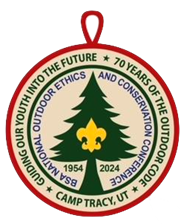
Conservation & Environment
Guiding Our Youth Into the Future 70 Years of the Outdoor Code
Main Conference: September 12-15, 2024
Pre-conference Courses: September 9-12, 2024
Location: Camp Tracy, Salt Lake City, UT
The National Outdoor Ethics and Conservation Conference is the Boy Scouts of America’s largest gathering of volunteers and professionals in the areas of Outdoor Ethics and Conservation. During the two days of the conference you can experience:
- Elective sessions
- Keynote speakers
- Exhibits with great ideas to take back to your council
- Guided discussions with land management professionals
- Representatives on-hand from Leave No Trace and Tread Lightly!
- Contests
- Fellowship with other Scouters who are passionate about conservation
Registration is open now! For more information about this exciting opportunity, please visit the following website: https://www.scouting.org/outdoor-programs/oec-conference/
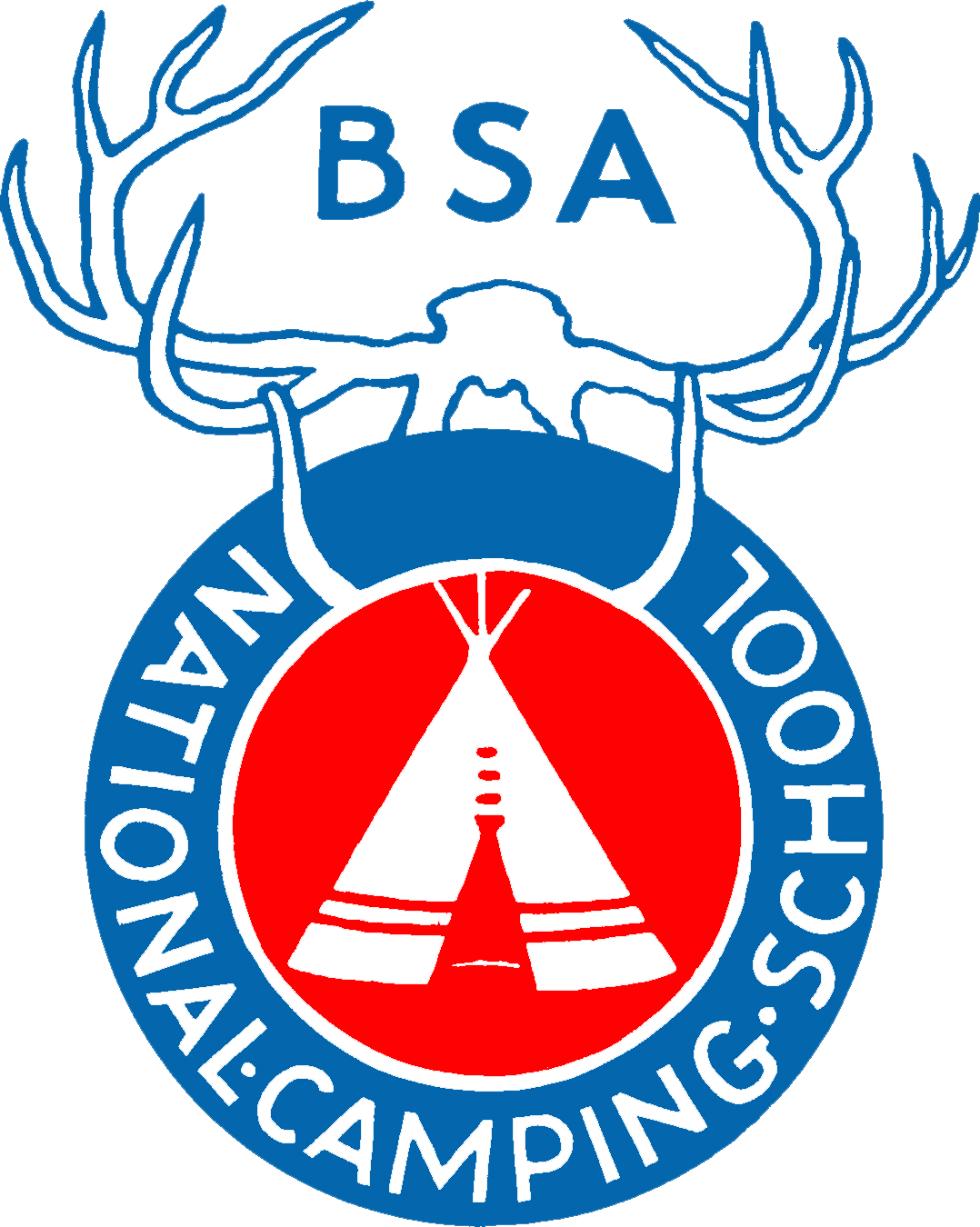
NCAP
The Short-term Camp Administrator plays a crucial role in the Boy Scouts of America National Camp Accreditation Program, ensuring that short-term camps meet the organization’s high standards for safety, program quality, and overall experience. This role involves overseeing the accreditation process for council-sponsored camps with one, two or three nights of camping involved. The administrator serves as a liaison between the camp and the national organization, working closely with camp leaders and staff to ensure compliance with established guidelines.
The Short-term Camp Administrator also serves as a resource for event committees, offering guidance on best practices, risk management, and program enhancement. This role plays a vital part in maintaining the high standards associated with the Boy Scouts of America, ensuring that short-term camps contribute positively to the overall Scouting experience.
These courses will be facilitated via Zoom through the National Service Center and consist of several modules designed to prepare participants to manage short-term camps including planning, program development, staff recruitment and assessment. Upon registration, participants will receive a link to log into the online training room.
FIRST TIME CERTIFICATION COURSES ($75):
This training is for individuals who have not previously been certified as Short-term Camp Administrators or those whose training has been expired for more than 60 days. Training will last about 8.5 hours with interactions and discussions designed to help meet the needs of the participants while conveying strategies to serve in this role. Course materials will be made available electronically.
• February 20, 22, 27, 29, 2024 – This is a weeknight course, held from 7 pm to 9 pm Central Time. Must attend all four sessions to be certified.
• March 23rd, 2024 – 9 AM Central Time
• April 20th, 2024 – 9 AM Central Time
• May 18th, 2024 – 9 AM Central Time
RECERTIFICATION COURSES ($65):
Individuals who have previously completed Short-Term Camp Administrator training may be eligible for recertification. Your Short-Term Camp Administrator training cannot be expired for more than 60 days at the start of the class. Please refer to the certification card you were issued to determine when your training expires or email NCS@Scouting.org for confirmation. Short-term Camp Administrator recertification training is approximately 4 hours.
• February 20, 22, 2024 – This is a weeknight course, held from 7 pm to 9 pm Central Time. Must attend both sessions to be certified.
• March 23rd, 2024 – 9 AM Central Time
• April 20th, 2024 – 9 AM Central Time
• May 18th, 2024 – 9 AM Central Time
READY TO REGISTER? CLICK THE LINK BELOW TO BE REDIRECTED TO THE ONLINE REGISTRATION PORTAL.
CLICK HERE TO REGISTER NOW
For more information about Short-term Camp Administrator NCS, please email NCS@scouting.org.
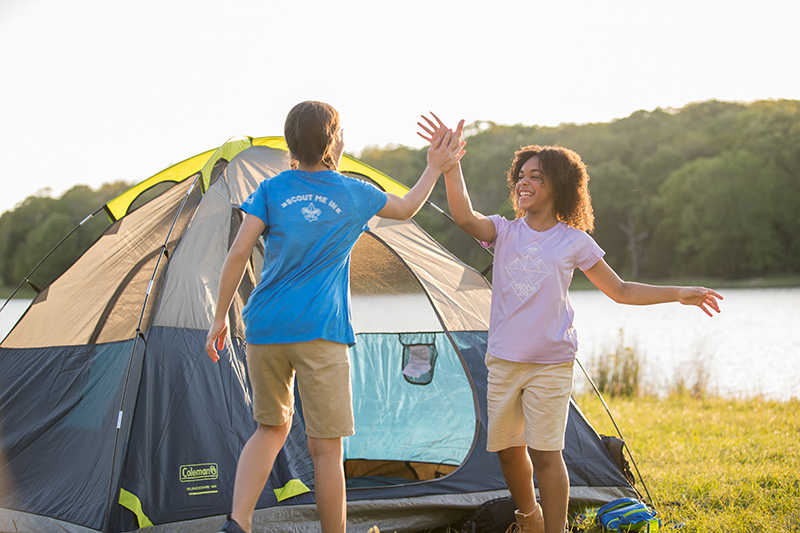
NCAP
Planning a short-term camp within the Boy Scouts of America (BSA) framework requires meticulous attention to safety considerations. The BSA’s National Camp Accreditation Program (NCAP) provides a comprehensive set of guidelines to ensure the well-being of participants. While NCAP offers valuable standards that help create a safer environment, short-term camp administrators and event organizers must still be proactive in addressing safety concerns. This article briefly introduces ten critical aspects of safety planning when organizing a council-sponsored short-term camp under NCAP guidelines (scouting.org/ncap).
Site Assessment:
Before anything else, organizers must conduct a thorough risk assessment of the event location. Using the NCAP Site Appraisal Form is a great start, especially if your short-term camp is not held at a BSA NCAP accredited property. Identifying potential hazards such as uneven terrain, wildlife encounters, or proximity to bodies of water is crucial. Addressing these risks in advance allows for effective mitigation strategies to be put in place. Check out NCAP Standard SA-002 for details on assessing your site location.
Staff Training:
A well-trained staff is the backbone of a safe camp. Organizers must ensure that all staff members are proficient in first aid, emergency response, and BSA safety protocols. Regular training sessions and drills contribute to a quick and effective response in case of emergencies. Ensure you have thoroughly reviewed the training required for each position and the programs you will offer. The Staff Qualification “400” series standards are a critical place to start. Be sure to view the verification section for each standard so you know what training verifications specifically to look for.
Health and Medical Considerations:
Accurate health records of all participants, including dietary restrictions and medical conditions, should be collected during registration. Having qualified medical personnel on-site is required, and an emergency medical plan must be in place, including having a copy of the current medical policies for your council. Touch base with your local council health supervisor to be sure you have the most current copy. Check out the HS “500” series standards, especially HS-503, HS-505 and more. For detailed requirements for your camp health officer for your location, review SQ-405.
Transportation Safety:
If the camp involves transportation, adherence to BSA transportation policies is paramount. This includes driver qualifications, vehicle maintenance, and seatbelt usage. Additionally, organizers should have a contingency plan for unexpected travel-related issues. In 2024 information was included in NCAP standard PS-216 to also include additional youth protection considerations as well.
Campsite Security:
Ensuring the security of the campsite is critical for the well-being of participants. Adequate lighting, secure sleeping arrangements, and surveillance measures should be in place. Event organizers should collaborate with local law enforcement to address any security concerns in the surrounding area. When is the last time your camper security plan was updated for your specific short-term camp location? This would be a great project for your local council enterprise risk management committee. Visit NCAP standard AO-804 for details on camper security.
Aquatics Safety:
If the camp involves water activities, event organizers must strictly adhere to BSA aquatics guidelines. Ensuring proper supervision, life jacket usage, and emergency response plans for water-related incidents are essential components of a safe short-term camp. The 2024 NCAP standards and the Guide to Safe Scouting “Safe Swim Defense and “Safety Afloat” policies will help you plan for aquatics activities at your short-term camp.
Fire Safety:
Camps often involve campfires, cooking, and other fire-related activities. Compliance with BSA fire safety guidelines, including supervision during cooking, and appropriate fire extinguishing equipment, is crucial to prevent accidents. Review NCAP standards FA-703,705,706 as you plan your short-term camp.
Weather Preparedness:
Unpredictable weather conditions pose a significant threat to camp safety. Monitoring weather forecasts, having an emergency shelter plan, and educating staff and participants about weather-related risks are essential components of safety planning. NCAP standard AO-805 helps each of us prepare for all types of emergencies, including weather. These emergencies may vary based on the time of year you are hosting your short-term camp.
Communication Protocols:
Establishing effective communication channels within the camp is vital. Whether through two-way radios, designated meeting points, or other means, clear communication ensures a rapid response to emergencies and facilitates coordination among staff members. NCAP standard AO-807 has details on how you can be prepared to communicate effectively.
Emergency Evacuation Plan:
Every camp must have a well-defined emergency evacuation plan. This plan should account for various scenarios, including natural disasters or medical emergencies. Regular drills should be conducted to familiarize staff and participants with evacuation procedures. A full list of emergencies you must have a plan for are included in NCAP standard AO-805. This list should also be reviewed by your local council enterprise risk management committee to determine if any other plans should be developed for your specific event and location.
Organizing a short-term camp under the standards set forth in the National Camp Accreditation Program requires a comprehensive approach to safety planning. Each short-term camp must have a currently certified Short-term camp administrator as well. By addressing risk factors, prioritizing staff training, and implementing robust safety protocols, event organizers can create an environment where participants can enjoy enriching experiences while minimizing potential hazards. Ultimately, the goal is to uphold the aims of the Boy Scouts of America while emphasizing the safety of all involved in the camping experience. It’s a new year so be sure you use the newest standards – 2024. These standards and other critical resources are available online at www.scouting.org/ncap.
Additional resources:
National Camp Accreditation Program – 2024 Standards
Guide to Safe Scouting
Standards at a Glance (Short-term Camp)
Scouting.org Short-term Camp webpage

Outdoor Ethics/Leave No Trace
September 12-14, 2024
🌲 Unleash your adventurous spirit at the 2024 BSA National Outdoor Ethics & Conservation Conference! 🏕️ Mark your calendars for September 12th-14th at stunning Camp Tracy, just east of Salt Lake City, UT. But wait, there’s more! Dive into a week of pre-conference offerings from September 9th-12th, expanding your knowledge and expertise.
🔍 Explore the theme that will set us on a course for the future as we lean on our Outdoor Ethics and Conservation legacy: “Guiding Our Youth Into The Future ~ 70 Years Of The Outdoor Code.” Get ready for an unforgettable experience as we celebrate seven decades of the Outdoor Code and chart a course for the future.
📅 It’s never too early to save the dates – so lock them in NOW! Keep an eye on our Facebook page and website for exciting updates about the conference. This isn’t just a conference; it’s a journey into the heart of BSA Outdoor Ethics & Conservation. See you there! 🌿 #AdventureAwaits #OutdoorEthics2024
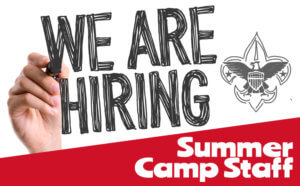
NCAP
BSA summer camps serve as the ultimate playground for our Scout adventurers, fostering growth and unforgettable experiences. But behind every thrilling moment lies a team of dedicated staff. So, how do we ensure we assemble the best staff while ticking all the legal boxes? Let’s delve into the hiring process, including some of the vital legal considerations and savvy practices, and discover a fantastic platform for job postings: Scout Life Jobs.
The Role of Legal Considerations in Hiring Staff
Before diving into the hiring process, let’s address the legal side:
- Equal Opportunity Employment: Ensuring fair treatment for all applicants, regardless of race, gender, religion, or other protected characteristics, is vital. Review your hiring practices to ensure they are in compliance.
- Background Checks: To guarantee the safety of our Scouts, conducting thorough background checks for all potential staff members is a must. NCAP Standard SQ-401 requires every staff member of long-term camp and many day camp staff be registered in the specific camp staff code for their age. Doing so ensures an annual criminal background check and screening takes place.
- Compliance with Documentation: Completing all necessary employment paperwork diligently, including contracts, agreements, and required certifications, is crucial to maintain legal compliance. Review your documentation practices with your local HR attorney and double check your processes for each step. Certain states require additional documentation so be sure you are up to speed on state requirements. Looking for a resource? Check out the ACA’s State Laws and Regulations website.
- Know who you are hiring: There are specific requirements for youth to work along with job limitations based on age. Be sure to visit the department of labor website https://www.dol.gov/agencies/whd/youthrules/young-workers for more information.
Best Practices for Hiring Staff
- Start NOW and expand your search area: Initiating the hiring process in advance and leveraging various channels such as local Scout troops, universities, and online platforms widens the pool of potential candidates. Consider using online job postings. Make sure to include “summer job” page on your local council website. (Hint: use “Summer Job” vs the camp name and job title gets you better search results.)
- Thorough Screening and Interviews: Conducting comprehensive interviews to assess a candidate’s skills, experiences, and alignment with Scouting principles is essential.
- Embrace Diversity and Clarity: Striving for diversity in the staff team and ensuring clear communication about camp expectations and responsibilities fosters an inclusive and committed environment.
Leveraging Scout Life Jobs for Job Postings
For an excellent platform to post job opportunities within the Scouting community, consider using Scout Life Jobs:
- Targeted Audience Reach: This platform attracts candidates who are passionate about Scouting and the outdoors, ensuring a higher likelihood of finding individuals who resonate with your camp’s mission.
- User-friendly Interface: Both job seekers and recruiters benefit from its user-friendly layout, making the process seamless and accessible.
- Aligning with Scout Values: By using Scout Life Jobs, we reach individuals who understand and value the core principles of Scouting, fostering a team dedicated to upholding these values. Visit the Scout Life Jobs website and start posting your open positions today!
In Conclusion
In the realm of BSA summer camps, a stellar staff team is the bedrock of memorable experiences. By aligning our hiring practices with legal obligations, adopting smart strategies, and utilizing platforms like Scout Life Jobs, we can build a team passionate about creating enriching and safe experiences for our Scouts.
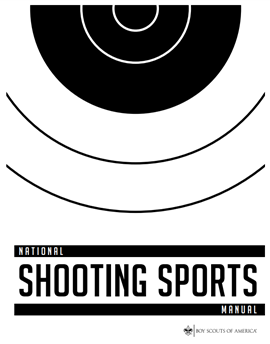
Shooting Sports
From BB gun shooting, archery, and sling shots at Cub Scouts to pistols and long rifles in Venturing, shooting sports can be an exciting experience for all Scouts in the BSA. So how do you implement these programs, who can do what and what resources are available?
First one of the best resources for you to use when planning a shooting sports program is the BSA National Shooting Sports manual posted on the BSA shooting sports website. Newly revised in 2022, the National Shooting Sports Manual is the go-to location and one stop for all things BSA shooting sports related. The manual includes information about:
- Shooting sports programs by rank
- Required training and supervision
- Unit program
- District and council programs
- Specialty programs
The National Shooting Sports Manual contains information about all approved shooting sports of the BSA. As stated in the Guide to Safe Scouting, if it is not listed in the shooting sports manual or our program literature, it is not an approved shooting activity. When there is a question, use this new resource as your guide.
In addition, the BSA age appropriate guidelines can be found in the Guide to Safe Scouting. On this chart you will be able to determine the kinds of programs that are appropriate for your Scouts to enjoy. BSA shooting sports program offer a diverse group of options based on age and ability levels. Remember: Cub Scouts can only participate in shooting programs as a part of a district or council event. Shooting sports are not a unit activity in Cub Scouting.
Shooting sports can add adventure and fun to your unit program (for Scouts BSA, Venturing and Sea Scouting) or your district or council events and activities. Following the guidance in the updated BSA National Shooting Sports manual will ensure you are “on target” with your programs and that they will meet the standards of the BSA. If you have questions about shooting sports, refer to the shooting sports manual or reach out to shooting.sports@scouting.org.

NCAP
Distracted driving poses a serious risk to everyone on the road, especially when driving to camp with Scouts. As we approach April, which is Distracted Driving Awareness Month, it’s crucial to remind Scouters and parents transporting Scouts about the dangers of not fully focusing on the road. According to the National Highway Traffic Safety Administration (NHTSA), distracted driving claimed 3,522 lives in 2021 alone, and the numbers have been increasing steadily.
There are three main types of distractions while driving: visual, manual, and cognitive. Visual distractions take your eyes off the road, manual distractions take your hands off the wheel, and cognitive distractions take your mind off driving. Texting while driving is one of the most dangerous distractions, as it involves all three types. Other common distractions include talking on the phone, eating, grooming, using navigation systems, and adjusting music or climate controls.
To ensure the safety of everyone on the road, especially when transporting Scouts, here are five tips to remember:
- Put your phone away: Avoid using your phone for calls, texts, or browsing while driving. If you must use your phone, pull over to a safe location. Encourage everyone to take the “It Can Wait” pledge.
- Plan ahead: Familiarize yourself with the route and directions before hitting the road. Use a GPS device or app that provides voice-guided directions.
- Secure loose items: Make sure all gear and equipment in the vehicle are properly secured to prevent them from becoming projectiles in the event of a sudden stop or crash.
- Avoid eating while driving: Eating can be distracting and take your hands off the wheel. If you need to eat, pull over to a safe location.
- Stay focused: Keep your mind on driving and avoid engaging in other activities that can take your attention away from the road.
April is the perfect month to reinforce these important principles to the Scouters and parents driving Scouts to camp this summer. You might consider including this topic in your Camp Leader Guide and mentioning this topic during your pre-camp leadership meeting (see NCAP standard PD-108). There are several resources you can utilize:
- BSA’s Distracted Driving Safety Moment
- Video – National Safety Council – Distracted Driving Calls Kill
- US Department of Transportation NHTSA Distracted Driving Resources
Email blast!
Email blast!

